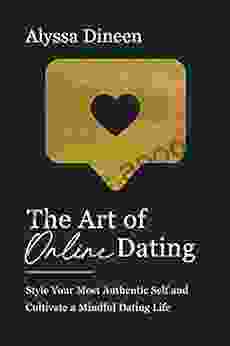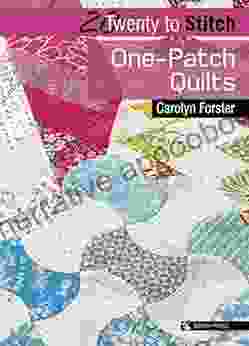Explore the Fascinating World of Crowd Simulation with Marc Stanford


: The Art and Science of Crowd Simulation
Imagine yourself amidst a bustling virtual city, surrounded by thousands of realistic-looking individuals going about their daily lives. The streets are teeming with life, cars navigate through the chaos, and conversations fill the air. This captivating experience is not a mere figment of your imagination; it is the result of cutting-edge crowd simulation techniques, and Marc Stanford is a pioneer in this enthralling field.
Crowd simulation involves creating virtual humans (also known as agents) with unique rules and behaviors, resulting in complex and dynamic crowd scenes. It finds applications in a wide range of domains, from video games and movies to urban planning and disaster preparedness.
4 out of 5
| Language | : | English |
| File size | : | 5705 KB |
| Text-to-Speech | : | Enabled |
| Screen Reader | : | Supported |
| Enhanced typesetting | : | Enabled |
| Print length | : | 305 pages |
Marc Stanford: The Visionary Behind Crowd Simulation
Marc Stanford is a computer graphics researcher and professor at the University of California, Berkeley. He has made groundbreaking contributions to the field of crowd simulation, revolutionizing the way virtual crowds are created and animated. Stanford's research focuses on developing algorithms that generate realistic crowd behaviors, such as navigation, collision avoidance, and group dynamics.
His seminal work on crowd simulation has earned him numerous awards and accolades, including the ACM SIGGRAPH Computer Graphics Achievement Award in 2019. Stanford's research has also led to the development of open-source crowd simulation software, enabling other researchers and practitioners to build upon his groundbreaking work.
The Intricacies of Crowd Simulation
Creating realistic crowd simulations is a complex task that requires a deep understanding of human behavior and movement. Stanford's approach involves dividing crowd simulation into several key components:
- Navigation: Determining how agents move through a virtual environment, taking into account obstacles and other agents.
- Collision Avoidance: Implementing algorithms that prevent agents from colliding with each other or with objects in the environment.
- Group Dynamics: Capturing the behavior of crowds in different scenarios, such as following leaders, forming groups, or dispersing.
- Agent Modeling: Creating virtual humans with unique appearances, attributes, and behaviors, resulting in diverse and believable crowds.
Stanford's research focuses on developing efficient and scalable algorithms for each of these components, allowing for the creation of large-scale crowd simulations in real-time.
Applications of Crowd Simulation
Crowd simulation technology has a wide range of practical applications, including:
- Entertainment: Creating immersive virtual crowds for movies, TV shows, and video games, enhancing realism and adding to the overall experience.
- Architecture and Urban Planning: Simulating crowd movement in proposed building designs or urban environments, optimizing crowd flow and minimizing congestion.
- Disaster Preparedness: Modeling crowd behavior in emergency situations, such as fires or earthquakes, assisting in planning and evacuation strategies.
- Social Science Research: Studying the emergence of collective behavior and crowd dynamics, providing insights into human social interactions.
The versatility of crowd simulation technology makes it a valuable tool in a diverse range of fields, improving our understanding of human behavior and enhancing our ability to plan for and manage large gatherings.
: The Future of Crowd Simulation
Marc Stanford's contributions to the field of crowd simulation have laid the foundation for ongoing advancements in creating realistic and lifelike virtual crowds. With the continuous development of new algorithms and techniques, crowd simulation is poised to play an increasingly significant role in shaping the future of entertainment, urban planning, and crowd management.
4 out of 5
| Language | : | English |
| File size | : | 5705 KB |
| Text-to-Speech | : | Enabled |
| Screen Reader | : | Supported |
| Enhanced typesetting | : | Enabled |
| Print length | : | 305 pages |
Do you want to contribute by writing guest posts on this blog?
Please contact us and send us a resume of previous articles that you have written.
 Book
Book Novel
Novel Page
Page Chapter
Chapter Text
Text Story
Story Genre
Genre Reader
Reader Library
Library Paperback
Paperback E-book
E-book Magazine
Magazine Newspaper
Newspaper Paragraph
Paragraph Sentence
Sentence Bookmark
Bookmark Shelf
Shelf Glossary
Glossary Bibliography
Bibliography Foreword
Foreword Preface
Preface Synopsis
Synopsis Annotation
Annotation Footnote
Footnote Manuscript
Manuscript Scroll
Scroll Codex
Codex Tome
Tome Bestseller
Bestseller Classics
Classics Library card
Library card Narrative
Narrative Biography
Biography Autobiography
Autobiography Memoir
Memoir Reference
Reference Encyclopedia
Encyclopedia Claire Angel
Claire Angel Shiping Hua
Shiping Hua Tracy Rees
Tracy Rees Theodora Goss
Theodora Goss Allan B Cobb
Allan B Cobb Emma Jayne
Emma Jayne Jane Halliwell Green
Jane Halliwell Green Thomas E Rudolph
Thomas E Rudolph Holly Black
Holly Black Kristen L Depken
Kristen L Depken David Hair
David Hair Alyson Belle
Alyson Belle Shane Koyczan
Shane Koyczan Meredith Jones
Meredith Jones Gina Latimerlo
Gina Latimerlo Dawn Maslar
Dawn Maslar Allie C Kilpatrick
Allie C Kilpatrick Donald J Savoie
Donald J Savoie Angelina J Steffort
Angelina J Steffort Mrgoodgoeshard
Mrgoodgoeshard
Light bulbAdvertise smarter! Our strategic ad space ensures maximum exposure. Reserve your spot today!

 Brett SimmonsGuitar Mastery Unleashed: Dive Deep into Katy Perry's Signature Riffs and...
Brett SimmonsGuitar Mastery Unleashed: Dive Deep into Katy Perry's Signature Riffs and...
 David PetersonHow Grassroots Coalition Fought Coors And Remade American Consumer Activism
David PetersonHow Grassroots Coalition Fought Coors And Remade American Consumer Activism Aldous HuxleyFollow ·8.1k
Aldous HuxleyFollow ·8.1k Drew BellFollow ·5.5k
Drew BellFollow ·5.5k Frank ButlerFollow ·14.2k
Frank ButlerFollow ·14.2k Colt SimmonsFollow ·15.4k
Colt SimmonsFollow ·15.4k Chase SimmonsFollow ·12.6k
Chase SimmonsFollow ·12.6k Christopher WoodsFollow ·6.3k
Christopher WoodsFollow ·6.3k Jesus MitchellFollow ·2.9k
Jesus MitchellFollow ·2.9k Kendall WardFollow ·11.5k
Kendall WardFollow ·11.5k

 F. Scott Fitzgerald
F. Scott FitzgeraldUnravel the Enigmatic Murder of Mary Russell: A...
Prologue: A Grisly Discovery In the...

 Connor Mitchell
Connor MitchellLittle Quilts: Gifts from Jelly Roll Scraps
Embrace the Art...

 Harold Powell
Harold PowellPoverty Survival Hope In An American City: A Pulitzer...
A testament to the resilience of the human...

 Ray Blair
Ray BlairConfronting Global Warming: Population, Resources, and...
Global warming is one of the most pressing...

 Gary Cox
Gary CoxStyle Your Most Authentic Self and Cultivate a Mindful...
Unlock Your True...

 Caleb Long
Caleb LongEmbark on a Colorful Patchwork Adventure: Discover 20 To...
Step into the captivating world of...
4 out of 5
| Language | : | English |
| File size | : | 5705 KB |
| Text-to-Speech | : | Enabled |
| Screen Reader | : | Supported |
| Enhanced typesetting | : | Enabled |
| Print length | : | 305 pages |








